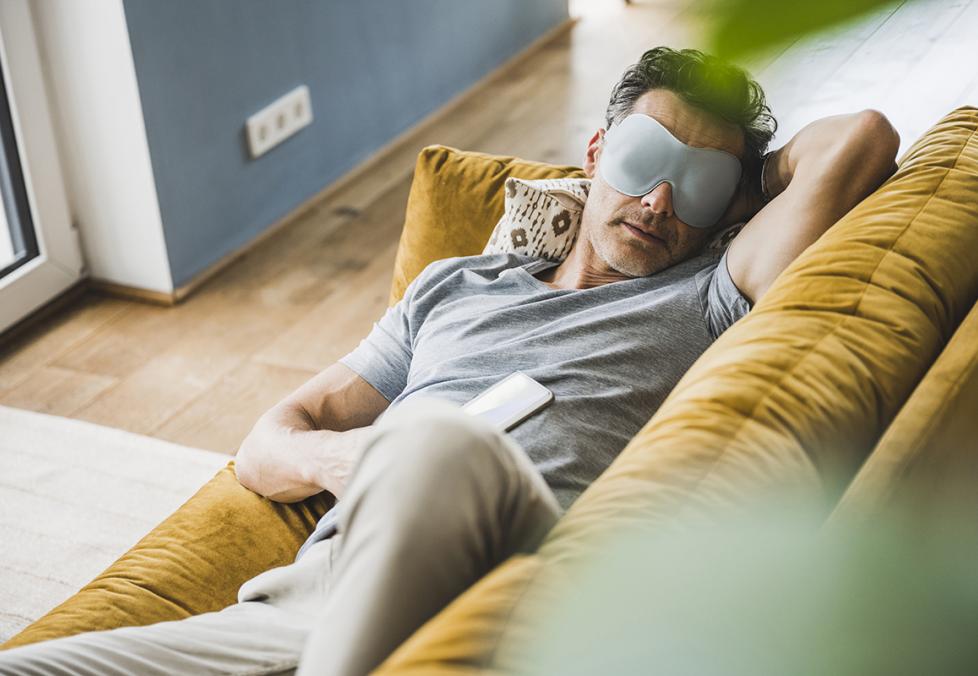
Treat your eyes to a free quality eye exam with our popular two-pair offer.
Everything you need to know to take care of your eyes — for life.

An eye compress is an easy, effective, low-cost way to help improve some minor eye issues. It’s especially helpful as a DIY stye treatment or for relieving dry eye.
But for such a simple treatment, it’s surprisingly easy to make mistakes when using one. To set the record straight, we spoke with Carla Ericksen, O.D., an optometrist and the owner of Beyond Vision LNK, located inside America’s Best Contacts & Eyeglasses in Lincoln, Nebraska.
Here’s what you need to know to make sure your eye compress is the right temperature every time. But first, a pro tip about picking the perfect one.
Eye exams are an essential part of your health care routine. Book an appointment with your America’s Best optometrist today! Click here to find a time that fits your schedule.
This is a common mistake, says Dr. Ericksen. Damp washcloths should be used for cleaning debris and crust around the eye, but they don’t make good compresses.
For an eye compress to be effective, it needs to maintain a consistent temperature the entire time you’re using it — which in most cases is a minimum of five minutes, says Dr. Ericksen.
“But a damp washcloth doesn’t retain its temperature for very long,” she says. That means you’ll be frequently rewetting the cloth to keep it at the desired temperature.
There are also some situations in which the moisture from a washcloth can potentially worsen an existing eye problem such as pink eye, says Dr. Ericksen.
For those reasons, Ericksen recommends that you choose an eye mask specifically designed to be used as an eye compress. It’s possible to buy high-tech eye masks with features such as digital temperature displays, but you can also pick up a basic mask filled with gel beads at any drugstore for $25 or less. It can be stored in the freezer or warmed up in the microwave, and it will hold a precise temperature for longer.

Treat your eyes to a free quality eye exam with our popular two-pair offer.
If you’re dealing with minor puffy eyes from something like allergies, crying, or a poor night's sleep, choose a cold compress.
“Cold helps constrict blood vessels, which can reduce swelling,” says Dr. Ericksen. Gel eye masks, which stay pliable even when stored in the freezer, are a good choice for the delicate eye area, she says.
But be careful: It’s possible to get an ice burn from placing a frozen object directly on the skin. Be sure to follow any safety instructions that come with your eye mask, or place a cloth between the eye mask and your skin.
Applying a cold compress twice a day for 10 to 15 minutes at a time should help keep puffiness in check.
First, an important caveat: “If you feel like you need to use a warm compress, you should probably go in for an evaluation with an optometrist, who can provide you with a more tailored treatment regimen,” says Dr. Ericksen.
That said, warm compresses can complement any other treatment you’re using to deal with irritating eye issues such as:
The warmth improves blood flow to the area and helps relax muscles. “Heat also helps open the glands in the lower lid, releasing built-up oils that normally coat the surface of the eye,” says Dr. Ericksen. That’s why warm compresses are so effective at treating the symptoms of dry eye and styes.
Research has shown that the ideal temperature for a warm compress is about 104 degrees Fahrenheit. That might sound hot, but it’s about the same temperature as a typical shower.
Still, if you have thinning skin around your eyes, are especially sensitive to heat, or have any other safety concerns (you’ll be using the compress on a young child, for example), don’t hesitate to ask your optometrist for guidance on the best temperature.
Try applying a warm compress for 10 to 15 minutes before bed, suggests Dr. Ericksen. Depending on your symptoms, your optometrist may give you more specific instructions.
Warm or cold compresses can help alleviate minor symptoms and can be part of your overall eye care routine. “But dry or irritated red eyes can have many different causes, including an underlying autoimmune condition,” says Dr. Ericksen. Only an optometrist can help you get to the root of the problem. Be sure to visit your optometrist if you have any pain, changes in vision, or any other new vision symptoms.
Medically reviewed by Carla Ericksen, O.D.
See our sources:
Dry eye overview: American Optometric Association
How heat and ice are used to treat injuries: American Academy of Pediatrics
The ideal temperature for a warm compress: The Ocular Surface